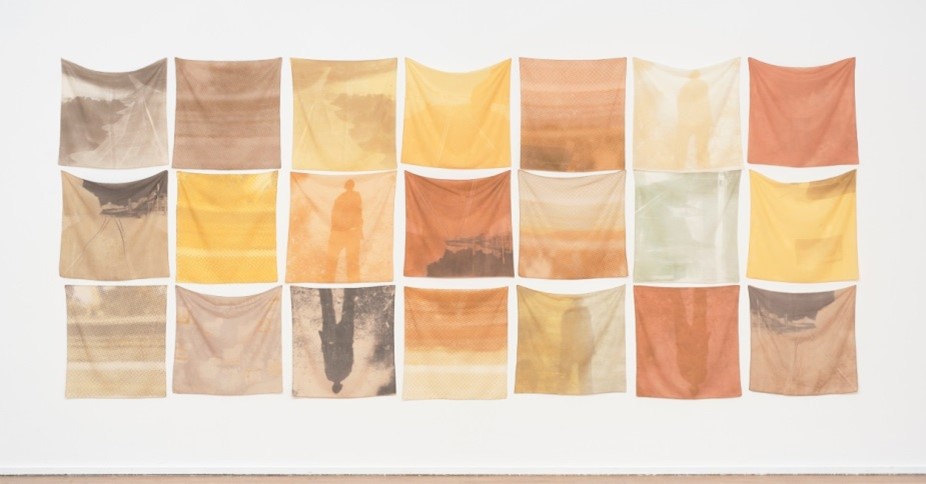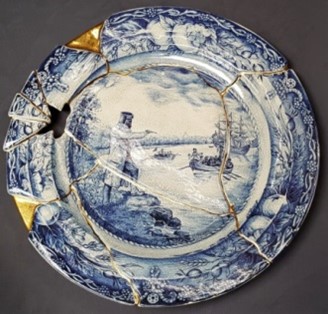Rigg on the Experimental Print Prize
In this reflection, Michael Rigg, patron of the Experimental Print Prize discusses two outstanding works exhibited in the inaugural 2019 prize. A champion of printmaking in Central Victoria, he explains his motivation in creating this unique exhibition and prize for the Castlemaine Art Museum. Entries for the 2021 Experimental Print Prize have been extended to 26 September 2021 due to the lockdown.

The Experimental Print Prize – a patron’s perspective
Entries have been called for the 2021 Experimental Print Prize, the second iteration of what we now call the EPP. This represents the fruition of a discussion with the former Castlemaine Art Museum Director Jennifer Kalionis, some six years ago. My vision was to support a prize and exhibition for Victorian printmakers with a particular focus on experimentation. At a deeper level, my purpose was to highlight the talent of print artists in this region, to extend them and the dialogue around printmaking, as well as to highlight the richness of the Castlemaine Art Museum collection. There is a strong tradition of printmaking in Victoria, and the EPP seeks to foster new directions in the field through both exhibiting shortlisted artists and awarding prizes. This prize is unique among printmaking prizes because it recognises that experimentation and risk are essential to art.
The 2019 Experimental Print Prize attracted some 120 submissions, with 55 works shortlisted and exhibited in the Stoneman Gallery. Selected and judged by Central Victorian–based artist and academic Dr Kylie Banyard and Melbourne-based artist and academic Dr Mark Dustin, the exhibition presented an exciting range of approaches to experimentation. With some works installed directly to the wall, some freestanding, one ‘slipping from wall to floor’, one perpendicular to the wall and others in vitrines. Some of the works were highly experimental, with experimentation ranging from how the works were made or their technique, through to experimentation in their meaning. In this Reflection on the inaugural Prize and its relevance, I discuss two of the works presented.
The prizewinning entry by Rebecca Mayo, titled Escape Route Melbourne to Canberra, consisted of silk panels pinned to the wall. Mayo’s work tells us of the artist’s frustration at working interstate while keeping a life and family at home in Melbourne. Twenty-one individually printed and pinned panels depict people, aerial views of landscape and aircraft, as the artist encounters them on her travel between work and home. The materiality of this monumental work suggests a slightly juggled but happy lifestyle. The colours of the work embody a commitment to natural dyes, made with vegetation collected on her long journey between work and home; this natural palette contributes to the overall beauty of the piece.
Another outstanding work was the ceramic plate Cook’s Landing by Robert Hague. Hague’s wall-mounted ceramic plate was printed with a bold personal statement addressing colonisation. Cleverly, Hague used the willow-pattern format, with cobalt blue reflecting the tradition of pattern printing onto china before firing. However, the plate was broken - the fragments repaired with a gold seam oozing across the work. This seam evokes Central Victoria’s gold mining history— its wealth built upon the exploitation and oppression of First Nations people. The willow pattern also references the oppression of workers within British pottery traditions. This broken and repaired plate embodies a rethinking of Australian history.

In my view, good art, such as these works, make a statement about our times, one which is relevant to both maker and viewers. These prints by Robert Hague and Rebecca Mayo represent valid commentary on colonialism and women's issues, and extend our current discussion on printmaking, its content and its relevance to the present. As the patron, I hope that the second Experimental Art Prize will build on and push the boundaries of experimentation and incorporate new approaches and new thinking in printmaking. I hope, too, that in the future Experimental Print Prize winners will be acquired by CAM, as the museum has made no new purchases of prints by living artists since 2015.
I encourage print artists to enter and I look forward to the exhibition in November this year.
Michael Rigg
June 2021